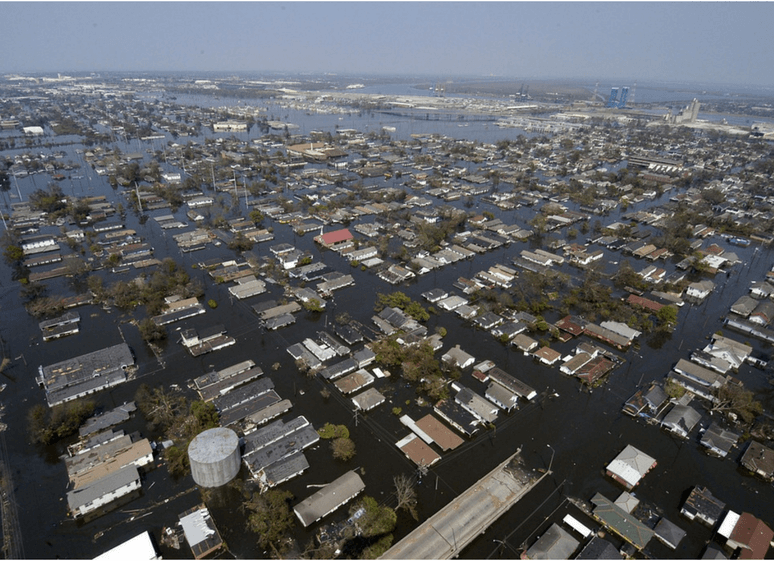How to Get Started with Climate Risk Assessment
One of the biggest problems people face when it comes to assessing potential climate risks is not knowing how to get started. This page will help you identify the steps and resources needed to undertake a systematic climate risk assessment, even if you’ve never done it before and even if you’re not a risk management specialist.
For a general overview of climate risk management, visit our guide “Climate Risk Management: How to Climate-Proof Your Company“.
What is climate risk assessment?
Climate risk assessment, also known as climate change risk assessment, is a systematic process to identify potential hazards from climate-related events, trends, forecasts, and projections, so you can start developing plans to avoid or manage these risks.
What are the steps to get started with climate risk assessment?
Here’s an overview of the steps:
- Secure buy-in from senior management
- Get an overview of your existing data & resources
- Define the scope of your climate risk assessment
- Identify the best method of climate risk assessment for your organization
- Identify tools and resources that can help you complete the assessment
Let’s take a look at each step.
1. Secure buy-in from senior management
Before you jump in, you need to make sure that your CEO or GM is committed to climate risk management.
In order to do this, you need to understand the questions and concerns senior management has around climate change and risk. We wrote this post on the 7 things your boss wants to know about climate change and business to help you get your boss on board.
Once you’ve secured support from those at the top, you can move on to the next step.
2. Get an overview of your existing data & resources
The depth of your risk assessment will depend on your existing data, available resources, and the severity of the risks.
Start by gathering the information your team might need for a climate risk assessment, such as:
- location and number of facilities
- current resource usage and performance data (i.e. water usage inventories)
- previously identified climate-related risks
- data on past weather variability
- regional or local projections on temperature, precipitation, and sea level rise
If you’re already using centralized environmental management software, you’ll be able to pull your usage, risk, and performance data in a matter of minutes.
You’ll also need to determine who will be part of your risk assessment team. Your team might include:
- risk managers
- facility managers
- finance staff
- EHS personnel
- emergency managers
- marketing and communications staff
- senior management
In some cases, you might decide that your team needs the expertise of an outside consultant. When choosing a consultant, it’s important to consider their past experience with climate risk assessment.
3. Define the scope of your climate risk assessment
After you’ve identified your existing data and resources, it’s time to determine the scope of your assessment. Some potential areas to consider including in your climate risk assessment are:
- facilities & assets
- products
- resources
- land use
- customers
- supply chain
- employees
- community
You might find that it’s impossible to cover all these areas in one assessment — that’s OK. Many companies choose to perform a series of climate risk assessments instead of a single assessment. The most important thing is just getting started.
4. Identify the best method of climate risk assessment for your organization
There are many different methods of climate risk assessment available for you to choose from. Each method has the potential to provide valuable information about the impacts of extreme weather and climate change.
These methods can be used together, or separately. It’s up to your team to determine which method is the most appropriate for your resources, expertise, and unique situation.
C2ES has identified 5 main types of climate assessments that are being used by companies around the world:
- Screening assessments: Screening assessments, also called “desk-top” assessments, require the least amount of expertise and commitment. They are intended to give a top-level view of potential climate risks across the company and are often the first step before diving into one of the methods below.
- Historical records of variability: By looking backward at historical records of variability and extreme weather, you can begin to get a sense of which risks will increase with climate change.
- Modeling/scenarios: Computer models can also help companies understand the future risks of climate change. Universities, government agencies, or climate risk consultants usually build these models.
- Third-party assessments: Many companies choose to work with outside consultants to identify climate-related risks. Assessments range from broad “score card” ratings to detailed assessments of specific facilities.
- Assessments with insurers: Insurers have invested heavily in modeling and analyzing risks related to climate change and extreme weather. This makes them well-positioned to help organizations assess (and mitigate) the risks of future damage.
5. Identify tools and resources that can help you complete the assessment
Quantifying climate-related risks poses a unique challenge. To that end, numerous free climate risk screening tools are available to help identify climate trends, vulnerabilities, climate-related risks, and possible adaptation options.
- Climate & Disaster Risk Screening Tools
- CRiSTAL
- Climate Change Explorer (weADAPT)
- ThinkHazard!
- Adaptation Wizard
- Adaptation Learning Mechanism
- CoastAdapt
- SERVIR
Next steps
Lisam is committed to helping you succeed with climate risk management. View our free climate risk management guide to help you climate-proof your company.
